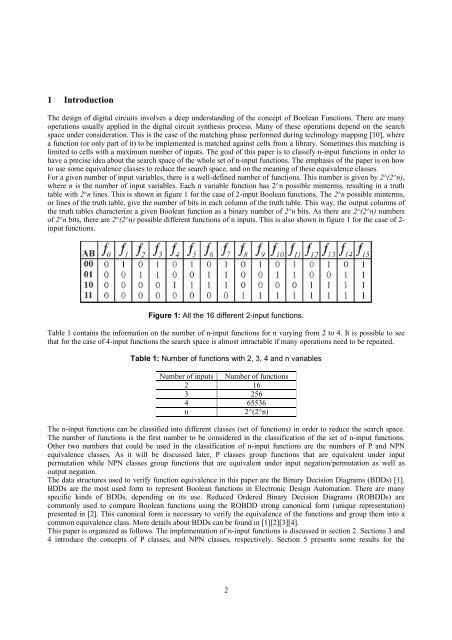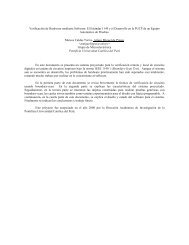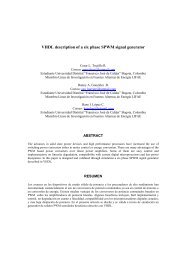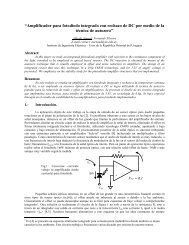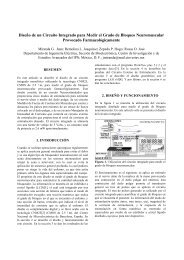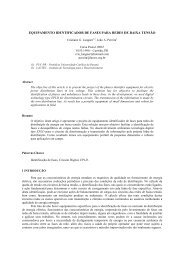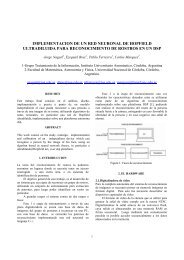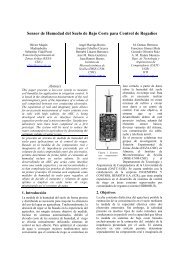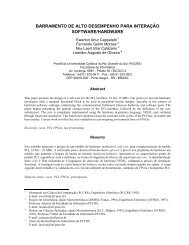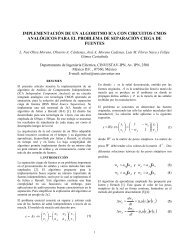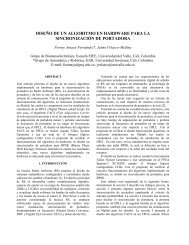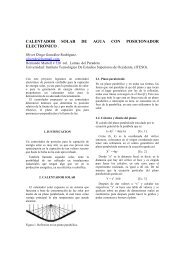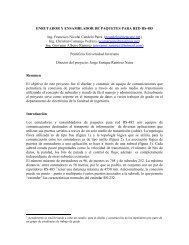Classifying n-Input Boolean Functions
Classifying n-Input Boolean Functions
Classifying n-Input Boolean Functions
Create successful ePaper yourself
Turn your PDF publications into a flip-book with our unique Google optimized e-Paper software.
1 Introduction<br />
The design of digital circuits involves a deep understanding of the concept of <strong>Boolean</strong> <strong>Functions</strong>. There are many<br />
operations usually applied in the digital circuit synthesis process. Many of these operations depend on the search<br />
space under consideration. This is the case of the matching phase performed during technology mapping [10], where<br />
a function (or only part of it) to be implemented is matched against cells from a library. Sometimes this matching is<br />
limited to cells with a maximum number of inputs. The goal of this paper is to classify n-input functions in order to<br />
have a precise idea about the search space of the whole set of n-input functions. The emphasis of the paper is on how<br />
to use some equivalence classes to reduce the search space, and on the meaning of these equivalence classes.<br />
For a given number of input variables, there is a well-defined number of functions. This number is given by 2^(2^n),<br />
where n is the number of input variables. Each n variable function has 2^n possible minterms, resulting in a truth<br />
table with 2^n lines. This is shown in figure 1 for the case of 2-input <strong>Boolean</strong> functions. The 2^n possible minterms,<br />
or lines of the truth table, give the number of bits in each column of the truth table. This way, the output columns of<br />
the truth tables characterize a given <strong>Boolean</strong> function as a binary number of 2^n bits. As there are 2^(2^n) numbers<br />
of 2^n bits, there are 2^(2^n) possible different functions of n inputs. This is also shown in figure 1 for the case of 2-<br />
input functions.<br />
Figure 1: All the 16 different 2-input functions.<br />
Table 1 contains the information on the number of n-input functions for n varying from 2 to 4. It is possible to see<br />
that for the case of 4-input functions the search space is almost intractable if many operations need to be repeated.<br />
Table 1: Number of functions with 2, 3, 4 and n variables<br />
Number of inputs Number of functions<br />
2 16<br />
3 256<br />
4 65536<br />
n<br />
2^(2^n)<br />
The n-input functions can be classified into different classes (set of functions) in order to reduce the search space.<br />
The number of functions is the first number to be considered in the classification of the set of n-input functions.<br />
Other two numbers that could be used in the classification of n-input functions are the numbers of P and NPN<br />
equivalence classes. As it will be discussed later, P classes group functions that are equivalent under input<br />
permutation while NPN classes group functions that are equivalent under input negation/permutation as well as<br />
output negation.<br />
The data structures used to verify function equivalence in this paper are the Binary Decision Diagrams (BDDs) [1].<br />
BDDs are the most used form to represent <strong>Boolean</strong> functions in Electronic Design Automation. There are many<br />
specific kinds of BDDs, depending on its use. Reduced Ordered Binary Decision Diagrams (ROBDDs) are<br />
commonly used to compare <strong>Boolean</strong> functions using the ROBDD strong canonical form (unique representation)<br />
presented in [2]. This canonical form is necessary to verify the equivalence of the functions and group them into a<br />
common equivalence class. More details about BDDs can be found in [1][2][3][4].<br />
This paper is organized as follows. The implementation of n-input functions is discussed in section 2. Sections 3 and<br />
4 introduce the concepts of P classes, and NPN classes, respectively. Section 5 presents some results for the<br />
2


